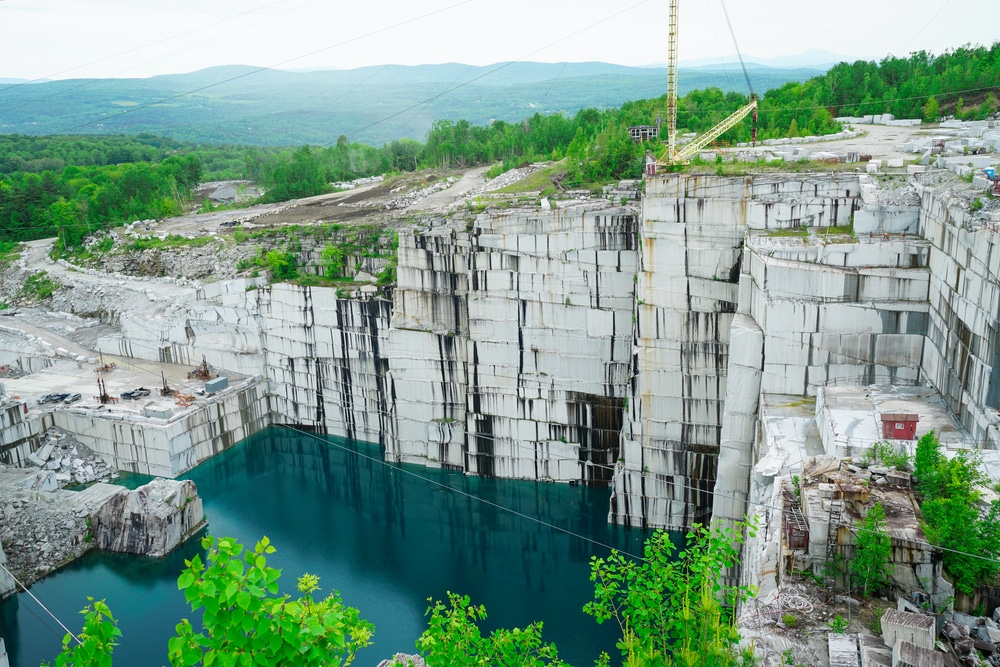Unearthing the Rich History and Sustainable Practices of Granite Quarrying
As we base on the precipice of uncovering the detailed tapestry of granite quarrying, a journey with time reveals not just the physical act of removing stone however additionally the cultural and historic significance woven into the really fabric of this method. From the old beginnings that laid the foundation for contemporary quarrying strategies to the sustainable methods that are forming the future of this sector, each sculpt mark on granite surface areas tells a tale waiting to be uncovered (granite quarries in south africa). The legacy of granite quarrying stretches far past plain extraction; it is a testimony to human resourcefulness, resilience, and the enduring appeal of this marvelous stone
Ancient Origins of Granite Quarrying
Going back to ancient worlds, the technique of quarrying granite has actually been an indispensable component of human background and building advancement. The earliest evidence of granite quarrying go back to ancient Egypt, where large pyramids and detailed sculptures were crafted from this durable stone. The Egyptians used primitive devices to draw out granite blocks from quarries, showcasing the value of this product in their huge building and constructions.
Moving on in background, the Greeks also made significant contributions to the quarrying of granite. The Greeks used granite in various building wonders, such as holy places and statuaries, showing their ability in shaping and carving this sturdy stone. The Romans even more refined the methods of quarrying granite, employing advanced tools like knives and hammers to remove and form granite for their famous structures.
Through the centuries, the practice of quarrying granite has actually advanced, with modern-day innovations improving effectiveness while preserving the timeless allure of this all-natural stone - granite quarries in south africa. From ancient civilizations to modern builders, the heritage of granite quarrying remains to shape our globe
Development of Quarrying Methods
The evolution of quarrying strategies has actually been marked by a continuous progression in the direction of better efficiency and precision in drawing out granite. From the fundamental approaches utilized by our ancestors to the sophisticated modern technologies utilized in modern-day quarrying operations, the sector has undergone substantial improvements. Early quarrying techniques entailed hands-on labor with basic devices such as knives, hammers, and wedges to draw out granite blocks from the planet. As worlds progressed, methods like fire-setting and primitive explosives were presented to facilitate the removal process.
Advancements in computer-controlled tools and 3D modeling have actually enhanced quarrying operations, leading to very little environmental effect and enhanced sustainability methods. As the demand for granite continues to rise, the evolution of quarrying techniques remains essential to meeting industry requires successfully and sustainably.
Social Relevance of Granite
Granite holds a profound social relevance across numerous worlds due to its long-lasting existence in building masterpieces and prized monuments. The social importance of granite extends beyond its physical attributes; it symbolizes resilience, stability, and eternity, making it a symbol of sustaining legacies and practices.

Sustainable Practices in Quarrying
Amidst the rich background of granite quarrying and its cultural relevance exists a growing emphasis on sustainable practices within the sector. As environmental recognition and problems regarding source depletion have heightened globally, the quarrying market has progressively embraced lasting methods to decrease its read review effect on the setting and bordering communities.

Furthermore, improvement and rehabilitation of quarry websites post-extraction are integral to lasting methods. By bring back quarried areas to a natural or advantageous state, such as developing wild animals habitats or leisure rooms, quarriers can balance out the ecological footprint of their operations and contribute positively to the neighborhood check out this site ecosystem.
Heritage of Granite Quarrying
With a historic backdrop soaked in craftsmanship and commercial progression, what sustaining influence has granite quarrying left on the landscape of modern society? The legacy of granite quarrying transcends simple removal practices; it has actually shaped architectural wonders, metropolitan landscapes, and social heritage worldwide. The durable nature of granite has actually made it a recommended option for monoliths, structures, and facilities, standing as a testament to the skill and artistry of quarry employees throughout generations.
Additionally, the financial impact of granite quarrying can not be neglected. The industry proceeds to give job opportunity and drive local economic situations in regions where granite extraction prevails. It has likewise stimulated technological advancements in quarrying strategies and devices, leading to more effective and lasting practices.
In regards to sustainability, the heritage of granite quarrying includes efforts to reduce ecological impacts with recovery tasks and responsible resource monitoring. By balancing economic rate of interests with ecological stewardship, the sector makes every effort to ensure that future generations can remain to take advantage of this long-lasting natural resource.
Conclusion
